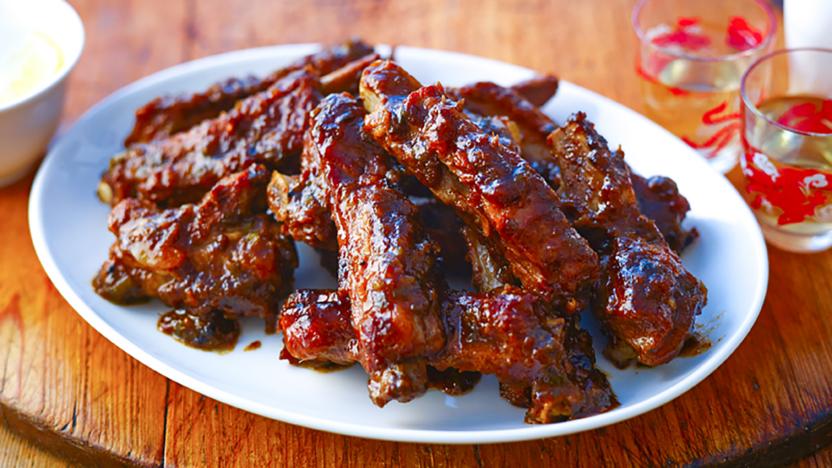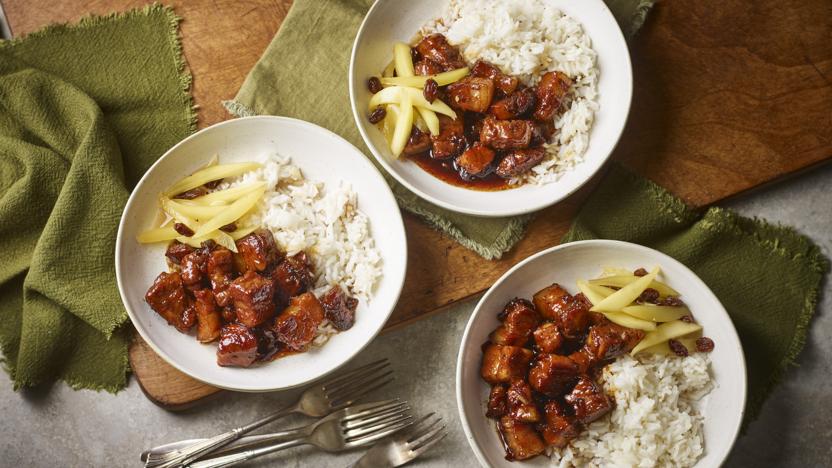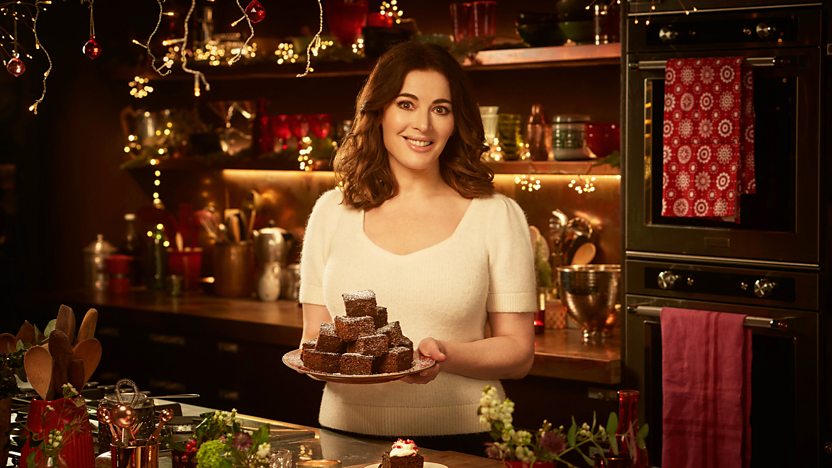Norwegian pork ribs

You are in for such a treat. This recipe has utterly changed the way I cook pork belly. In truth, I had come across this Norwegian pork rib roast before, as I spent quite a lot of time in Norway when I was a young child, but I had no idea then how it was cooked and had long since forgotten about it.
It is not out of a desire to cut corners that I say this, but I do not want gravy here. This pork rib roast really doesn’t need it, and I’m not sure it suits it. I much prefer the softly lapping cream sauce from the , known in my house as Chip Gratin.
Ingredients
- 2.5–3kg/5½ –6½lb bone-in pork belly, prepared as in recipe tip below
- 3 fat garlic cloves, peeled
- 3 tbsp sea salt flakes (or 1½ tbsp fine sea salt)
- 1 tsp juniper berries
- large bunch (or 2 x 20g packets) fresh dill, fronds and stalks separated
- 2 onions, each peeled and cut into 3 thick slices
- 250ml/9fl oz hot water from a just-boiled kettle
Method
You need to take the pork out of the fridge about an hour before you cook it so factor that into your timetable, adding it to the 3 hours, give or take, that the pork will be in the oven. For now, unwrap it and lay it rind-side down on a large chopping board.
Put the garlic cloves into the mortar part of a pestle and mortar, or into a bowl you can use with a stick blender. Add 2 tablespoons of the sea salt flakes (or 1 tablespoon of fine sea salt), the juniper berries and the stalks from your dill, and start either bashing, grinding and crushing or whizzing, as you prefer, until you have an aromatic green paste. It’s harder work with a pestle and mortar, but I adore making it this way: it makes my kitchen smell, rather invigoratingly, like a Nordic spa.
Where the butcher has sawn through the bones, you will have 2 long troughs to tuck the paste into. Run a knife through them if you need to open up the cut area a little more. Press the green paste evenly between them. Push as many of the dill fronds into the paste as you can fit. Turn the pork rind-side up. Rub the rind and sides of the pork with the remaining 1 tablespoon of sea salt flakes (or 1½ teaspoons of fine sea salt).
Get out a large roasting tin (I use one that measures 34 x 37 x 5cm/13½ x 14½ x 2in). Place the onion slices in the tin to prop up the pork. One end must be slightly higher than the other, so that any liquid pours off and doesn’t pool on the rind, so place the pork, rind-side up, on the onions. Leave the pork in the tin for about 1 hour to lose its fridge chill. Preheat the oven to 220C/200C Fan/Gas 7.
Pour the 250ml of just-boiled water into the roasting tin, cover the tin tightly with kitchen foil, and cook in the hot oven for 45 minutes. When it’s had its 45 minutes, take the pork out of the oven and remove the foil; the rind should have softened and puffed up a little. Use a large sharp knife to define the squares on the rind, cutting a little deeper into the original scoring marks. Or if you didn’t get it done by the butcher, do your own scoring at this point, cutting the softened rind into 2cm/¾in squares.
Turn the oven down to 170C/150C Fan/Gas 3½. Put the pork back into the oven without the foil, making sure that it’s still perched, one end higher than the other, on the slices of onion. Roast for 2½ hours at this temperature, by which time much of the fat should have rendered down, melting lusciously into the meat, and the rind will be beginning to crackle. But if, when you poke the tip of a knife into the pork, it doesn’t feel tender, leave it in for another 30 minutes.
Turn the oven back up to 220C/200C Fan/Gas 7 and give the pork around 15 minutes – or a little longer if needed, but make sure the rind doesn’t go too far and burn – until the crackling is deep gold and crunchy: some of the little squares may have popped up. Take the pork out of the oven and remove carefully to a carving board. Cut through both sides of each rib, down to where the butcher cut through the bones, then cut a chunky rib section for each person. The crackling may make this tricky, so you can use poultry shears or kitchen scissors to cut through it before slicing down into the meat. This way each rib section gets a proper piece of crackling.
Because the meat has to be so heavily salted to boost juiciness and flavour, most of the onions will be far too salty to serve. One or two will be perfect though, and divinely sticky with pork fat; you can share these out meagrely now, or save them for sandwiches later.
Recipe Tips
You will need to ask the butcher for pork belly on the bone and for them to saw through the bones in two lines lengthways, as if about to divide the pork into three equal, long strips; however, you do not want them to go so far, they just need to cut through the bones, but not deep into the meat. On serving, you simply and easily cut the belly into chunky slabs. You also need the butcher to score the rind, and if possible to make small squares, scoring lines 2cm/¾in apart both vertically and horizontally. Or, if you fancy a bit of light surgery later, you can do that bit yourself: it’ll be easy enough when you come to it, I promise. And I speak as the most cack-handed of cooks.
If the pork you get from the butcher is wrapped in plastic, remove it, and wrap in baking parchment before putting it into the fridge.




